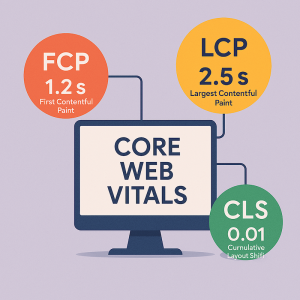Creating content that resonates with both search engines and AI systems requires more than traditional SEO tactics. As part of a comprehensive digital marketing strategy, GEO-optimizing blog content—short for Generative Engine Optimization—builds upon search engine optimization as the foundation for GEO. This approach ensures your content is structured, informative, and engaging enough to be surfaced and cited by AI tools while also ranking well in search engines like Google, increasing your visibility on search engine results and emphasizing the importance of appearing on search engine results pages.
This guide explains how to GEO-optimize blog content effectively by aligning with the latest standards in EEAT (Experience, Expertise, Authoritativeness, and Trustworthiness), user intent, and AI-readability. With the rise of AI platforms such as ChatGPT, Perplexity, and Google’s AI, these systems are becoming primary sources for information, making it crucial to consider their impact on content visibility. Optimizing content for both traditional search engines and AI-driven platforms is essential to maximize your reach and authority in today’s evolving search landscape.
What is GEO (Generative Engine Optimization)?
Generative Engine Optimization (GEO) refers to the practice of crafting online content that is not only SEO-optimized for traditional search engines, which are conventional platforms like Google that use traditional search algorithms to rank content on search engine results pages, but also optimized for generative AI engines such as ChatGPT, Google Gemini, and other LLM-based tools. While traditional search engines rely on established search engine algorithms, generative AI engines use advanced AI models that process and understand content differently, focusing on language nuances, context, and originality.
GEO focuses on:
- Structuring content for AI comprehension
- Providing clear, authoritative answers
- Using schema and data formatting that facilitates citations
- Creating factual, evergreen content with clarity and depth
- Adapting to AI search and AI-powered search as emerging trends that require new optimization strategies
- Optimizing for AI-powered search engines and AI engine platforms that drive modern content discovery
Answer engines, which are generative AI systems, provide direct, conversational responses to user queries, making it essential to optimize content for these new platforms.
GEO doesn’t replace SEO; it enhances it for a future where AI tools are the primary way users discover and consume information. As search engine algorithms and traditional search algorithms evolve, search optimization now includes both conventional and AI-driven approaches to ensure content remains visible and relevant.
Why GEO Matters for Blog Content
AI-driven discovery is accelerating. Google Search is increasingly integrating generative snippets. Tools like ChatGPT cite sources in responses. AI-generated answers, AI-generated results, and AI search results are now common features in search, significantly impacting organic visibility. If your blog is not GEO-optimized:
- AI tools may overlook your content, causing you to miss out on AI-generated responses and overviews such as Google’s AI overview and Google AI overviews
- You lose referral traffic and brand visibility, as direct answer and direct answers features reduce traditional organic clicks
- Your competitors can outrank you with better-structured insights, trigger AI-generated overviews, and improve user engagement by understanding new search behavior and how people search
Implementing effective content strategies and digital marketing strategies is essential to optimize content for both AI and traditional search.
A well-optimized blog meets both human and machine needs, improving topical authority and long-term SEO ROI.
Step-by-Step: How to GEO-Optimize Blog Content
1. Choose Topics That Match AI and User Intent
Generative engines prioritize helpful, evergreen, and niche-specific queries. Use tools like:
- AlsoAsked and Answer the Public for question-based queries
- Google Search Console for actual search queries
- AI tools to simulate how prompts surface content
2. Align with EEAT Principles
To be trusted by AI and search engines, show:
- Experience: Share firsthand insights, not just rehashed info
- Expertise: Reference credentials, data, or years in the field
- Authoritativeness: Link to reputable sources and thought leaders
- Trustworthiness: Use clear formatting, disclaimers, and cite sources
3. Structure Content for Clarity and AI Parsing
Use:
- H2/H3 Headers with question-based phrasing
- Short paragraphs (1–3 sentences)
- Bullet points and numbered lists
- Tables, charts, and quotes
- Glossaries or definitions for key terms
4. Use Schema Markup (Especially FAQ and HowTo)
Implement structured data like:
- FAQPage
- HowTo
- Article with author, datePublished, and headline
This helps AI and Google interpret your content accurately.
5. Provide Unique Insights with Citation-Ready Formatting
AI engines prefer:
- Specific facts or stats with sources
- Step-by-step processes
- Expert opinions with clear attribution
- Lists and tables that can be easily quoted
6. Include Internal and External Links
Follow best practices:
- Add one internal link to relevant site content (e.g., content repurposing strategies)
- Link to two authoritative external sources, such as Search Engine Journal or Google’s official blog (target=”_blank”)
7. End with a GEO-Aware CTA
Rather than generic CTAs, use:
“Want to ensure your content is ready for both AI and search engines? Contact our GEO content strategists for a personalized audit.”
User Experience and GEO Optimization
User experience (UX) is at the heart of effective GEO. As search engines and AI-driven search engines become more sophisticated, they increasingly prioritize content that aligns with user intent and delivers a seamless experience. GEO optimization goes beyond keywords—it’s about creating content that is relevant, concise, and easy for both AI systems and human readers to understand.
Technical Optimization for GEO
Technical optimization is a foundational element of GEO. As AI-driven search engines and AI systems rely on advanced algorithms to crawl, index, and interpret web pages, ensuring your site is technically robust is essential for strong search results.
Measuring GEO Success
Evaluating the effectiveness of your GEO strategy requires a shift from traditional SEO metrics to those that reflect the evolving landscape of AI-driven search engines. While rankings and organic search traffic remain important, GEO success is increasingly measured by how well your content satisfies user intent and engages audiences through AI-driven search.
Common GEO Mistakes to Avoid
Avoiding common pitfalls is crucial for successful GEO. Many marketers fall into the trap of relying solely on traditional SEO tactics, which may limit visibility in AI-driven search results and reduce content effectiveness.
GEO Optimization and Content Distribution
Effective GEO optimization doesn’t end with content creation—it extends to how you distribute your content across the digital landscape. As search engines and AI-driven search engines increasingly factor in user intent and user behavior, a robust content distribution strategy is essential for reaching your target audience and maximizing your the impact of your GEO-optimized blog content.
Future-Proof Your Content Strategy
Ready to outrank your competitors and get cited by AI tools?
Book a free consultation with our team of GEO experts to audit your current blog content and identify quick wins for Generative Engine Optimization.
Frequently Asked Questions
What makes content GEO-friendly?
Content that’s GEO-friendly is well-structured, cites reliable sources, addresses user intent clearly, and includes schema for machine readability.
Is GEO replacing traditional SEO?
No. GEO builds on SEO by preparing content for AI engines. It complements, not replaces, existing SEO best practices.
How do I know if AI tools are citing my blog?
Track citations by searching your brand or article title in AI tools or using platforms like ChatGPT to simulate queries.
Can older blog posts be GEO-optimized?
Yes. Updating structure, adding schema, and clarifying language can retrofit existing posts for GEO-readiness.
Do I need coding skills to implement schema?
No. Tools like Google’s Structured Data Markup Helper make adding schema straightforward without coding.





